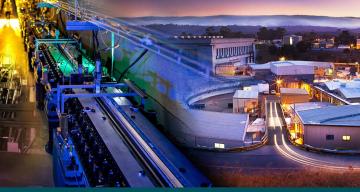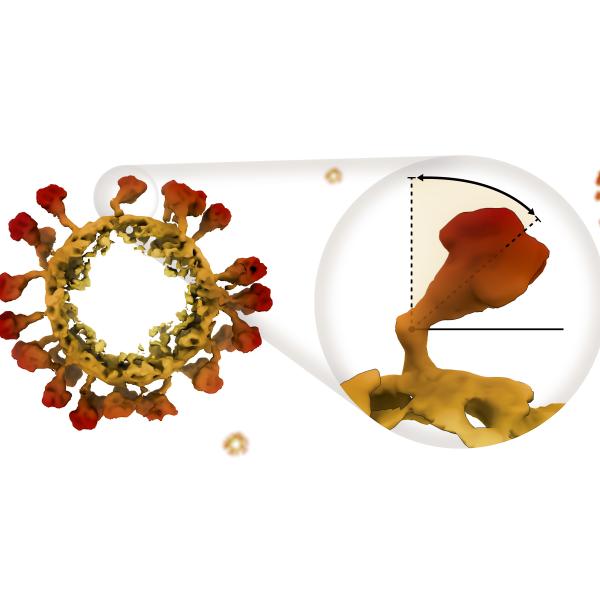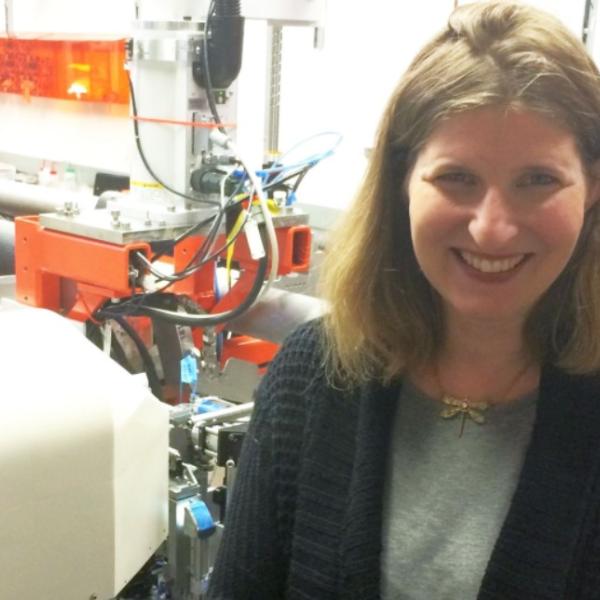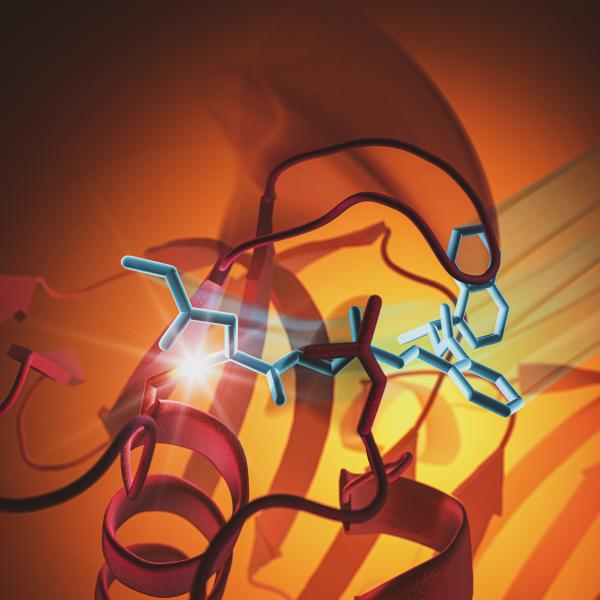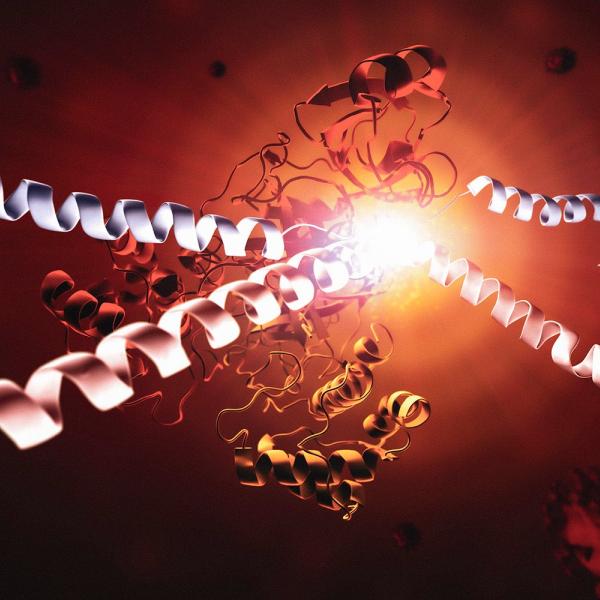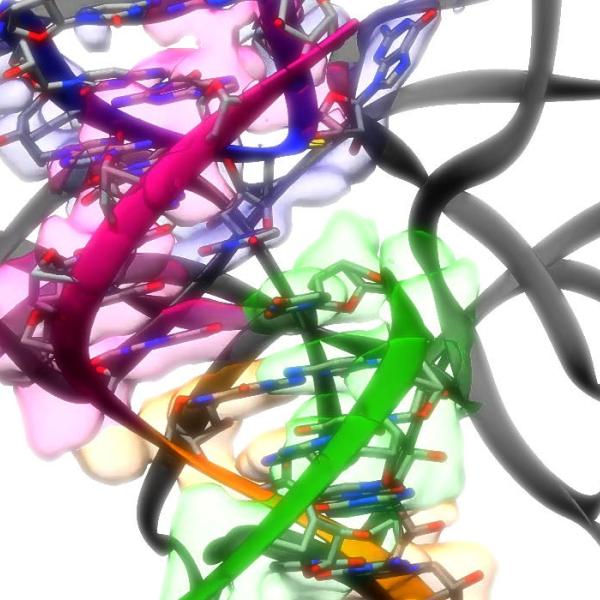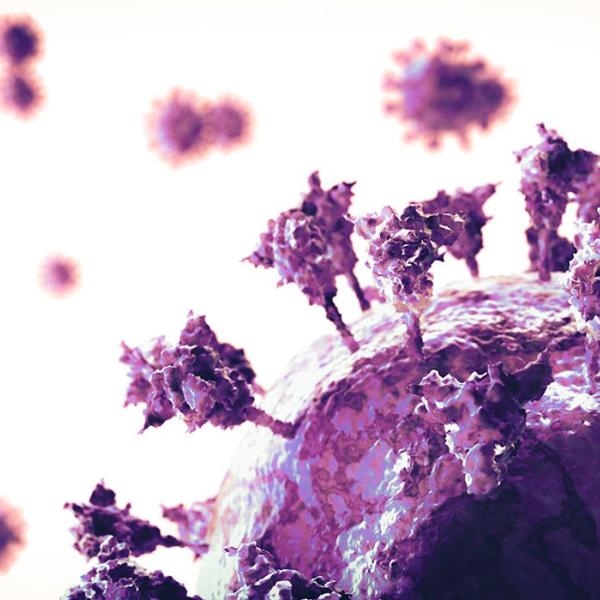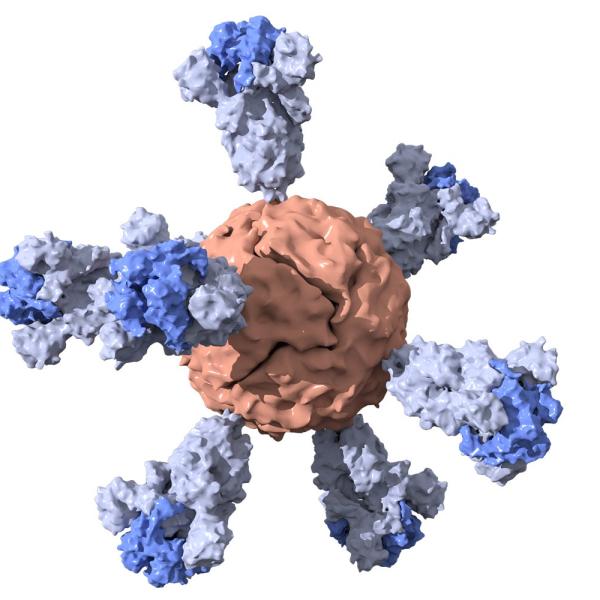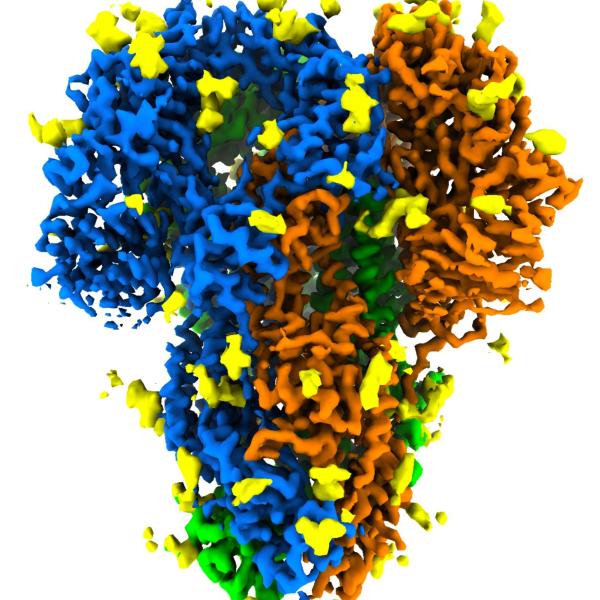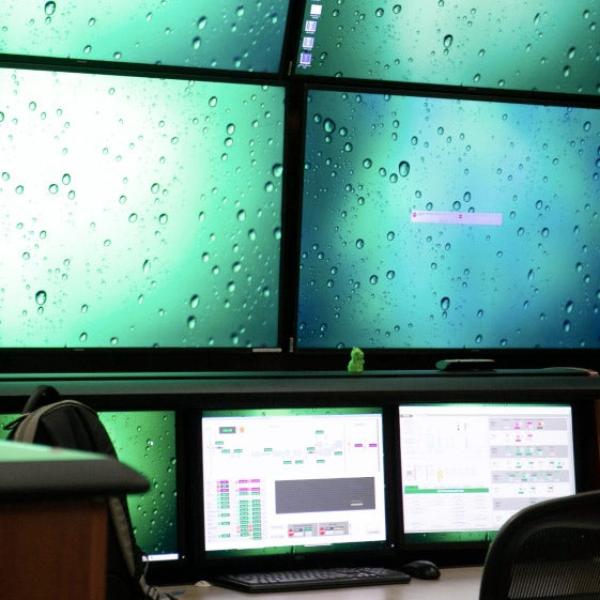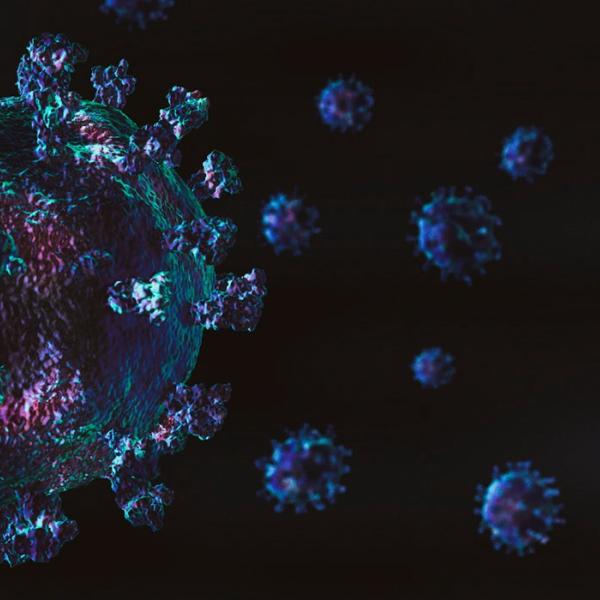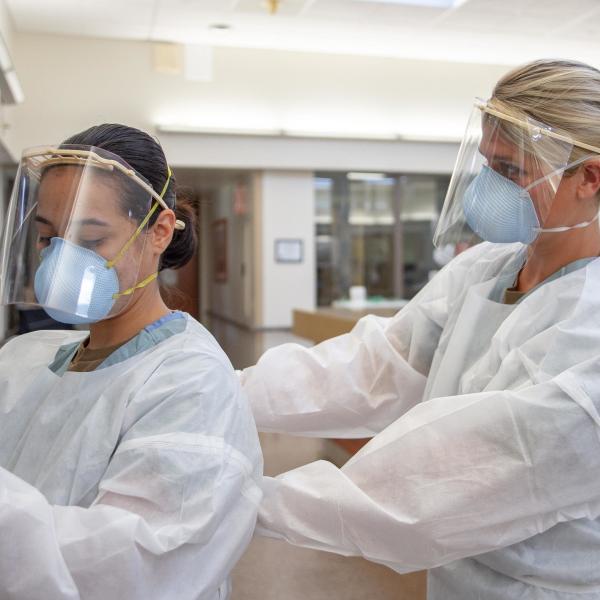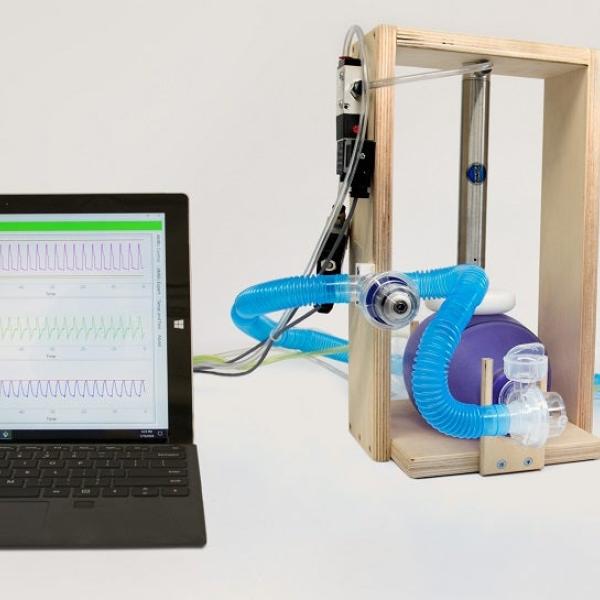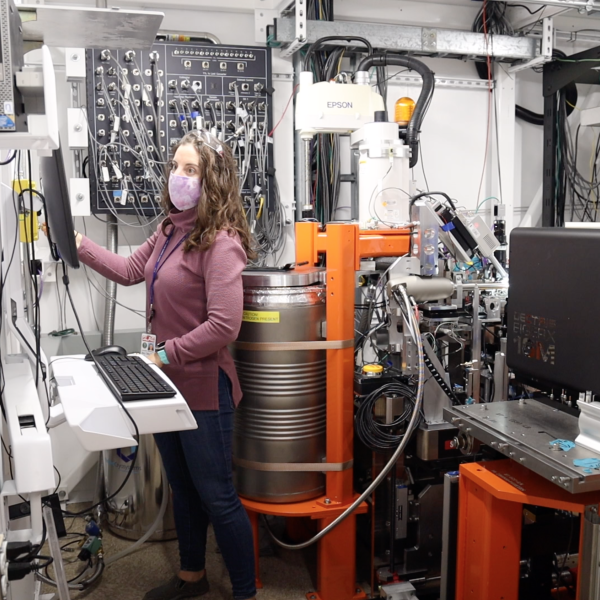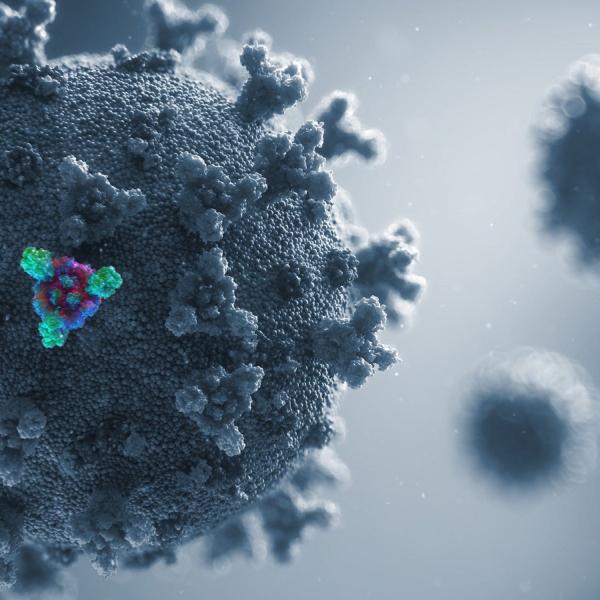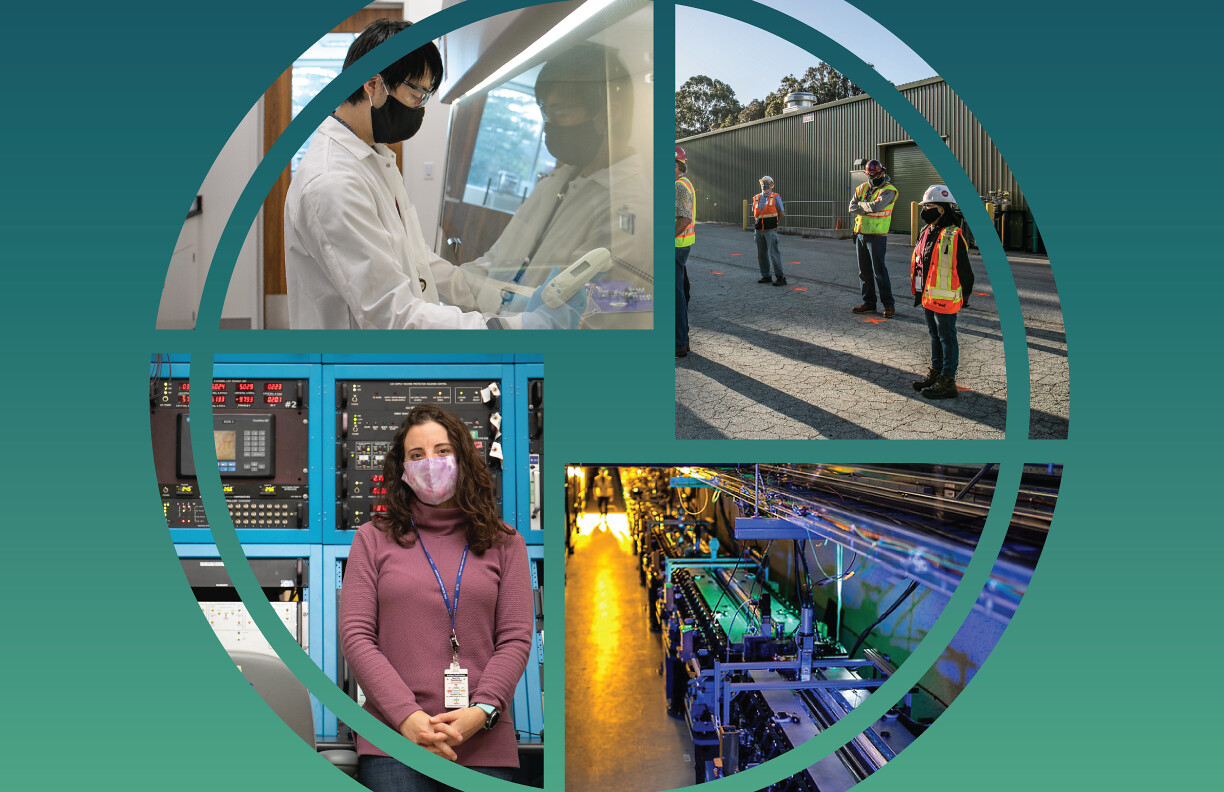Here’s a look at what we’re doing to make a difference in the global fight against COVID-19.
To prevent or treat COVID-19, scientists study the atomic structure and behavior of the virus that causes the disease, SARS-CoV-2. Currently, scientists at SLAC and other global institutions are searching for more protective vaccines and therapeutics that combat a broader spectrum of variants of the virus. The goal is to help keep people safe and better understand the nature of SARS-CoV-2.
SLAC is uniquely equipped to do this work; in fact, we’ve been doing it for decades. At our large-scale facilities, which are open to scientists from all over the world, powerful beams of X-rays and electrons probe the structures and functions of proteins and other molecular machines that make all living things tick, including our bodies and the microbes that make us sick.
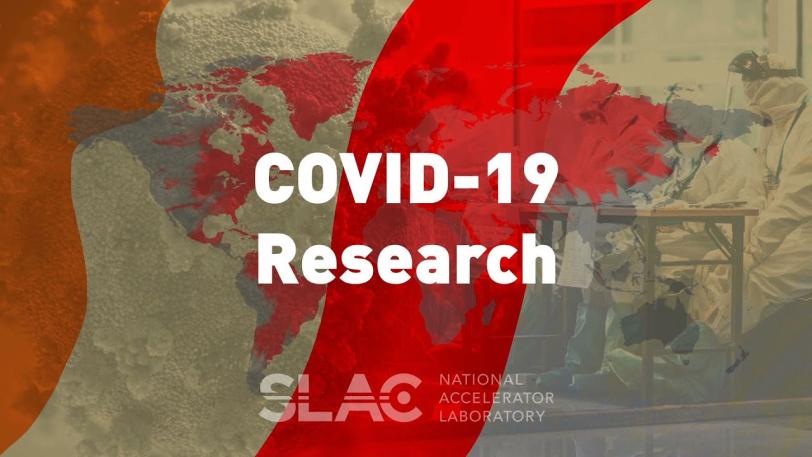
SLAC joins the global fight against COVID-19
SLAC National Accelerator Laboratory is responding to the coronavirus crisis by imaging disease-related biomolecules, developing standards for reliable coronavirus testing and enabling other essential research. As the world grapples with COVID-19, SLAC scientists are turning their attention to SARS-CoV-2, the virus behind the disease. The studies described in this video do not use infectious materials, such as live viruses.
Olivier Bonin/SLAC National Accelerator Laboratory
Among other things, these studies can reveal whether a potential drug molecule fits snugly enough into a pocket on the virus to keep it from functioning and how specific parts of the virus interact with immune system cells that are supposed to protect us.
Our researchers are leading the development of global standards to make testing for coronavirus virus, and for the antibodies the body makes in response to infection, more reliable.
They’re also participating in Department of Energy working groups that coordinate a wide range of coronavirus research, from building low-cost emergency ventilators to finding the best ways to decontaminate face masks.
Our collaborations with Stanford University, our fellow national labs and other partners, from research institutions to industry, help move these efforts forward.
SLAC in the news
Media contact
SLAC Media Relations
media@slac.stanford.edu
SLAC during the pandemic
On March 16, 2020, the majority of our SLAC staff began working from home to follow the Bay Area counties' shelter-in-place orders. Some workers remained and others eventually returned to the lab to support COVID-19 related research conducted at our scientific facilities or resume construction on major projects. This album features a behind-the-scenes look at the lab early on in the pandemic.
How we study the virus
Knowing how the coronavirus is put together and how it operates at atomic and molecular levels is crucial for designing vaccines to prevent infection and drugs to treat it. SLAC uses X-rays and electrons to explore the virus’s atomic structure and understand how it infects and hijacks our cells.
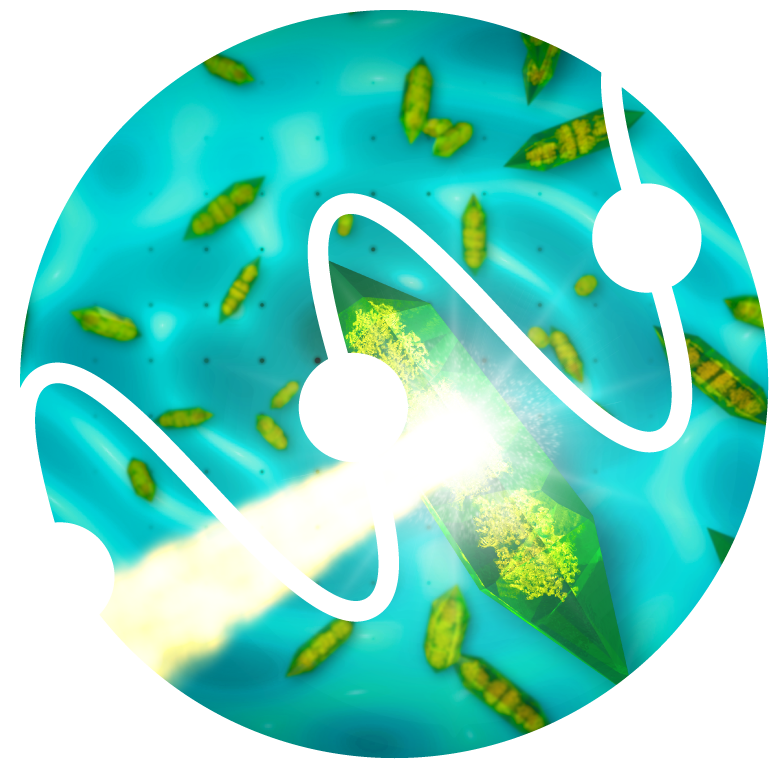
Stanford Synchrotron Radiation Lightsource (SSRL)
X-Ray crystallography
At SLAC’s synchrotron X-ray light source, SSRL, and at its X-ray laser, Linac Coherent Light Sources (LCLS), researchers shoot powerful X-ray beams at crystallized viral proteins. By analyzing the pattern of X-rays that bounce off, scientists determine the protein’s atomic structure and how that structure changes as the protein binds to other molecules, such as potential drug candidates or components of the immune system.
Our tools & techniques
X-ray crystallography explained
X-ray studies at SLAC facilities help scientists understand the fundamental workings of nature by probing matter in atomic detail. In this video, Jeney Wierman, staff scientist at SLAC, explains the technique of X-ray crystallography at SSRL.
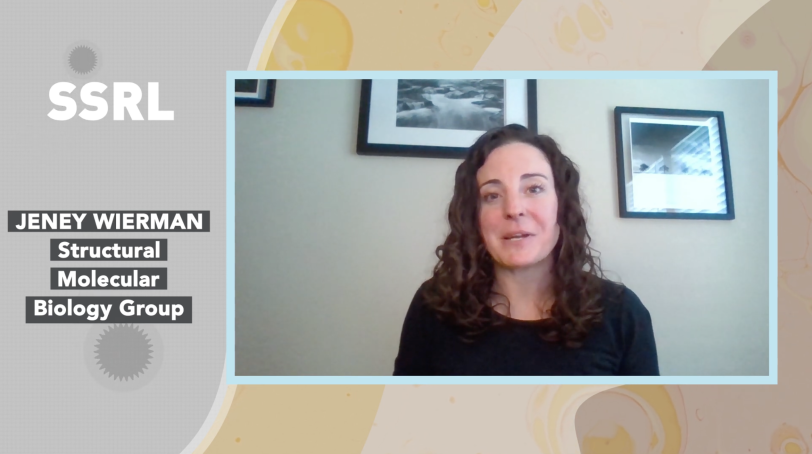
SSRL X-Ray Crystallography Covid-19 Research
Jeney Wierman, a staff scientist at SLAC, explains how SSRL tools are contributing to COVID-19 research.
Olivier Bonin/SLAC National Accelerator Laboratory
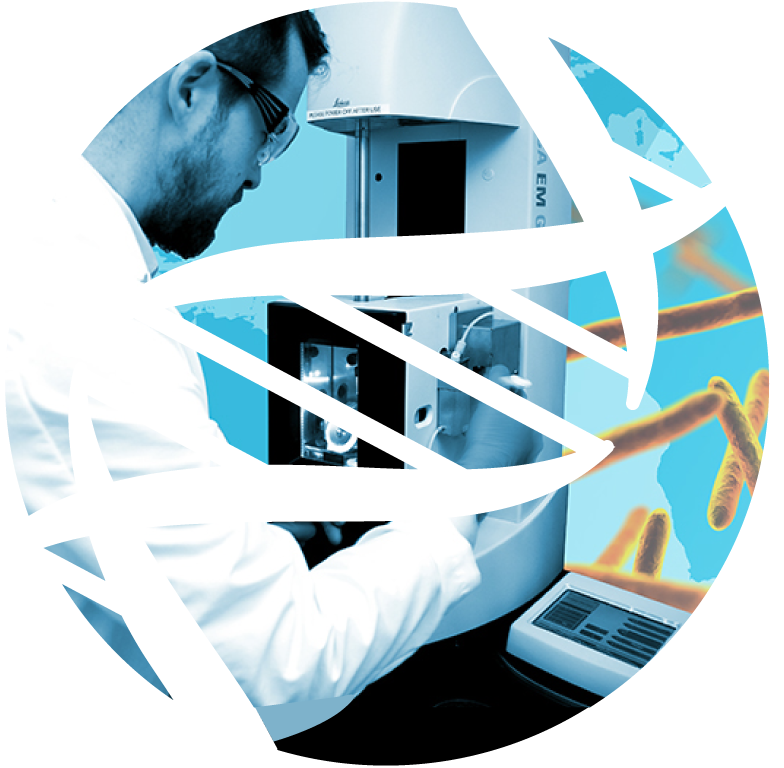
Cryo-EM
Cryogenic electron microscopy
In SLAC’s cryo-EM facilities, scientists flash-freeze bits of a virus in place, then fire electrons at them to look at their atomic structures and how those structures bend and twist. They can even look at an entire frozen virus. These incredibly detailed snapshots help reveal how viruses infect cells and what they do once inside.
Part of this work is funded by the DOE Office of Science. SSRL and LCLS are DOE Office of Science user facilities. Experimental stations for X-ray crystallography and X-ray scattering are part of the SSRL Structural Molecular Biology Program, which is supported by the DOE Office of Biological and Environmental Research and by the NIH, National Institute of General Medical Sciences. The Cryo-EM centers are funded by the NIH Common Fund Transformative High Resolution Cryo-Electron Microscopy Program and National Institute of General Medical Sciences Biomedical Technology Research Resource Program. JIMB is hosted by SLAC in collaboration with the National Institute of Standards and Technology (NIST) and Stanford.
Editor's note: The studies described in this news collection do not use infectious materials, such as live viruses.
For questions or comments, contact the SLAC Office of Communications at communications@slac.stanford.edu
About SLAC
SLAC National Accelerator Laboratory explores how the universe works at the biggest, smallest and fastest scales and invents powerful tools used by researchers around the globe. As world leaders in ultrafast science and bold explorers of the physics of the universe, we forge new ground in understanding our origins and building a healthier and more sustainable future. Our discovery and innovation help develop new materials and chemical processes and open unprecedented views of the cosmos and life’s most delicate machinery. Building on more than 60 years of visionary research, we help shape the future by advancing areas such as quantum technology, scientific computing and the development of next-generation accelerators.
SLAC is operated by Stanford University for the U.S. Department of Energy’s Office of Science. The Office of Science is the single largest supporter of basic research in the physical sciences in the United States and is working to address some of the most pressing challenges of our time.
